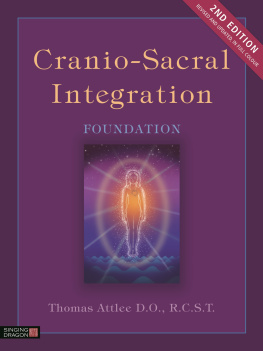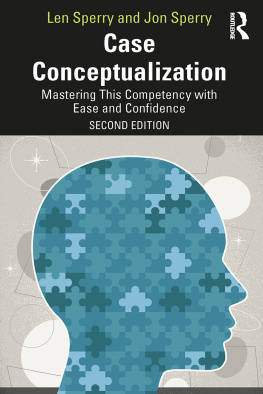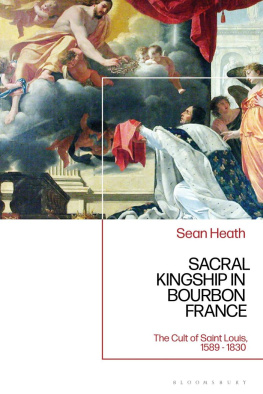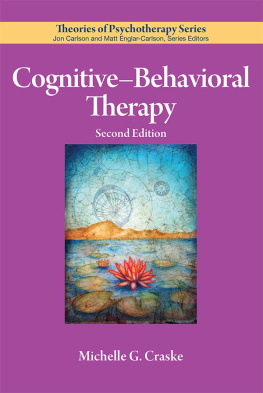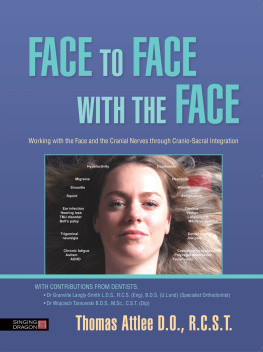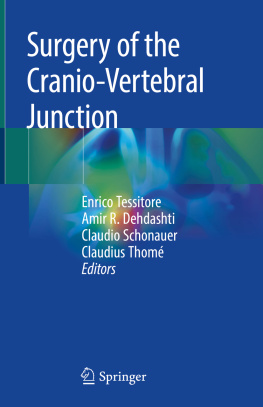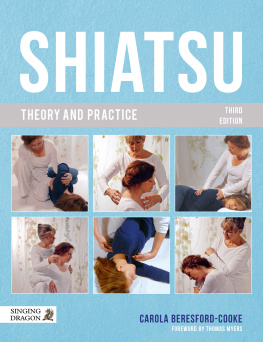
Cranio-Sacral
Integration
Foundation
Second Edition
Thomas Attlee, D.O, R.C.S.T
Illustrated by Sam Wilson, with added colour by Louise Sam
Photographs by Peter Ashworth

LONDON AND PHILADELPHIA
Contents
Part I
Introduction
SETTING THE SCENE
Chapter 1
Amy
Amy was six months old when her parents brought her to see me. She had been screaming continuously for all of those six months, day and night, night and day, all day, every day. She was screaming as she arrived, in obvious inconsolable pain.
Her parents had taken her to countless doctors, specialists and therapists. She had been given endless medications. Nothing had helped.
Her parents were at their wits end. They were desperately concerned for their baby. They had hardly had any sleep in six months. They were exhausted. They couldnt take Amy anywhere because of her constant screaming. They couldnt invite friends round. Their life was a continuous nightmare. They were on the point of breaking up.
I placed a hand on Amys abdomen and a hand over the crown of her head. Within a few seconds she had stopped screaming. Within minutes she was asleep. From that moment on, she was a happy healthy little girl, no longer screaming inconsolably, but growing up contentedly just like any other healthy child. Life became peaceful and harmonious. Her parents stayed together and had another baby. I saw Amy and her younger brother from time to time as they grew up healthy and happy family life transformed from the nightmare of those early months.
What happened during those few minutes of treatment?
What happened was cranio-sacral integration.
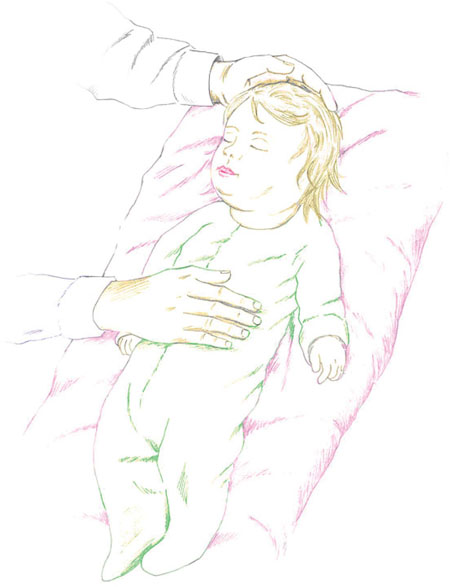
Chapter 2
The Source of Life
When we rest our hands very lightly on the body and engage on a subtle level, we can feel rhythmic motion being expressed throughout the body, as if the whole body were gently breathing not just the usual breathing of the lungs, but a more gentle, subtle, rhythmic motion. What is causing this movement?
The cranial concept
The cranial concept originated with William Sutherland. In 1899, as a student osteopath in Kirksville, Missouri, Sutherland looked at a human cranium, and saw by the way that it was structured that it was clearly designed to move. Conventional anatomy books stated that the bones of an adult cranium do not move, but Sutherland recognised that the cranium would not have evolved in this way unless there were movement. He explored this idea, experimenting on himself and others, and he identified a subtle rhythmic motion of expansion and contraction, expressed not only in the cranium but throughout the body.
Sutherland dedicated his life to developing this concept. As an osteopath, he started from a more bony mechanical perspective, but as he continued his explorations throughout his life, he realised that the movement he was feeling was not particularly related to bones, membranes or fluids. It was emanating from a deeper source, generated by more profound forces of nature, part of a wider field of biodynamic forces that pervade the universe what Sutherland called the Breath of Life.
Universal field
In 2013, Professor Peter Higgs received the Nobel Prize for a concept he first proposed in 1964 and for which the experimental proof was finally provided at the CERN laboratory in Switzerland in 2012. Professor Higgs postulated that there is an invisible field pervading the whole universe .
Within quantum physics it is now well established that there is a universal field within which everything exists and interacts every galaxy, star, planet, solid object, living being, molecule, atom, subatomic particle a field from which particles take their mass.
In cranio-sacral integration, we also recognise a universal field, a unifying matrix within which life on earth has come into being and each one of us exists as an individual matrix within this wider matrix.
Just as in the oceans, sea creatures exist as individual creatures within the oceanic matrix, influenced by the waves, tides, currents and forces of the ocean, so we, as human beings, exist as individuals within the more subtle energetic matrix around us, influenced by the waves, tides, currents and biodynamic forces which pervade the universe and which surround and permeate us. We are formed embryologically, developed, maintained and sustained by the biodynamic forces within that field, and every cell, atom, and subatomic particle within our body is an integral part of that wider field. This field is composed of the electromagnetic and other forces which pervade every corner of the universe the forces which are the basis of physics, chemistry and biology, which have led to the evolution of life on earth, and which continue to sustain life.
These natural forces determine the progress of life, growth, health, and healing, whether in an acorn enabling it to develop into a magnificent oak tree or in a human being, enabling our progress from embryological development and throughout life. As cranio-sacral therapists, we engage with this field and we interact with the forces within this field.
These forces are expressed in the body as rhythmic motion.
Rhythmic motion
A key element in cranio-sacral therapy is the recognition of rhythmic motion. There are many rhythms in life arterial pulse, breathing, and various other rhythms but three principal rhythms are identified as specific to the cranial concept cranio-sacral rhythm, middle tide, long tide. These movements are very subtle, not noticeable in everyday life, and require a highly tuned sensitivity, a profound inner stillness, and extensive practice and experience in order to identify them.
Because they are so subtle, some people might doubt whether these rhythms really exist, but evidence of their presence has been captured on film. In 1954, William Seifriz, Professor of Botany at the University of Pennsylvania, showed on film that all forms of life are expressing this subtle rhythmic motion. Seifriz investigated one of the most primitive life forms, a slime mould (which can readily be found growing on tree stumps and rotten logs). Slime mould is so primitive that it doesnt even have a cellular structure. It is simply protoplasm, the basic material of all living things. Seifriz was able to show on film that even this primitive form of life expresses rhythmic motion. His film shows a regular rhythmic cycle of 100 seconds (the same as the long tide) and also shows that the protoplasm is exhibiting multiple rhythms. He expressed the view that what he was witnessing was very close to identifying the source of life itself.
The living matrix
Rhythmic motion is a significant distinguishing feature of cranial work, but cranial work is not ultimately about rhythmic motion. It is far more than that. The distinguished biologist and physiologist James Oschman describes the body as a coherent living matrix . Our bodies are not merely bones, membranes, fluids and tissues. Everything in the body is composed of cells, molecules, atoms, subatomic particles, nuclear forces, integrated together as one cohesive interactive unit. Every cell is in communication with every other cell.
The living matrix is a continuous and dynamic, supramolecular web-work, extending into every nook and cranny of the body: a nuclear matrix within a cellular matrix within a connective tissue matrix. In essence, when you touch a human body you are touching a continuously interconnected system, composed of virtually all the molecules in the body, linked together in an intricate web-work. Energy Medicine: The Scientific Basis (Oshman 2000)
Next page
